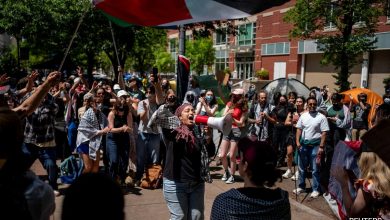How an Archbishop went from Vatican loyalist to demanding the Pope’s resignation

At 9:30 a.m. last Wednesday, Archbishop Carlo Maria Viganò showed up at the Rome apartment of a conservative Vatican reporter with a simple clerical collar, a Rocky Mountains baseball cap and an explosive story to tell.
Viganò, the former chief Vatican diplomat in the United States, spent the morning working shoulder to shoulder with the reporter at his dining room table on a 7,000-word letter that called for the resignation of Pope Francis, accusing him of covering up sexual abuse and giving comfort to a “homosexual current” in the Vatican.
The Roman Catholic Church has formally changed its doctrine to oppose capital punishment, reflecting an evolution in teachings that started with Pope John Paul II.
The journalist, Marco Tosatti, said he had smoothed out the narrative. The enraged archbishop brought no evidence, he said, but he did supply the flair, condemning the homosexual networks inside the church that act “with the power of octopus tentacles” to “strangle innocent victims and priestly vocations.”
When the letter was finished, Viganò took his leave, turning off his cellphone. Keeping his destination a secret because he was “worried for his own security,” Tosatti said, the archbishop then simply “disappeared.”
The letter, published Sunday, has challenged Francis’ papacy and shaken the Roman Catholic Church to its core. The pope has said he won’t dignify it with a response, yet the allegations have touched off an ideological civil war, with the usually shadowy Vatican backstabbing giving way to open combat.
The letter exposed deep ideological clashes, with conservatives taking up arms against Francis’ inclusive vision of a church that is less focused on divisive issues like abortion and homosexuality. But Viganò — who himself has been accused of hindering a sexual misconduct investigation in Minnesota — also seems to be settling old scores.
As the papal ambassador, or nuncio, in the United States, Viganò sided with conservative culture warriors and used his role in naming new bishops to put staunch conservatives in San Francisco, Denver and Baltimore. But he found himself iced out after the election of Pope Francis.
Then in 2015, he personally ran afoul of Francis. Viganò’s decision to invite a staunch critic of gay rights to greet the pope in Washington during a visit to the United States directly challenged Francis’ inclusive message and prompted a controversy that nearly overshadowed the trip.
Juan Carlos Cruz, an abuse survivor with whom Francis has spoken at length, said the pope recently told him Viganò nearly sabotaged the visit by inviting the critic, Kim Davis, a Kentucky county clerk who became a conservative cause célèbre when she refused to grant marriage licenses to same-sex couples.
“I didn’t know who that woman was, and he snuck her in to say hello to me, and of course they made a whole publicity out of it,” Francis said, according to Cruz.
“And I was horrified and I fired that nuncio,” Cruz recalled the pope saying.
Now, three years later, Viganò appears to be trying to return the favor.
Known for his short temper and ambition, Viganò has clashed with superiors who stunted his ascent in the church and has played a key role in some of the most stunning Vatican scandals of recent times.
While Viganò, who was once criticized by church traditionalists as overly pragmatic, has aligned himself with a small but influential group of church traditionalists who have spent years seeking to stop Francis, many of his critics think his personal grudges are central to his motivations.
After one church leader shipped him out of the Vatican to America, thwarting his hopes of receiving a scarlet cardinal’s hat, Viganò’s private 2011 memos — many of them deeply unflattering to the leader responsible for his ouster from Rome — were leaked and splashed around the globe.
Supporters of Viganò, who did not return a request for comment, bristle at the notion that his letter calling on the pope to resign represents the fury of a disgruntled excellency. They portray him as principled and shocked by what he sees as the destruction of the church he loves.





